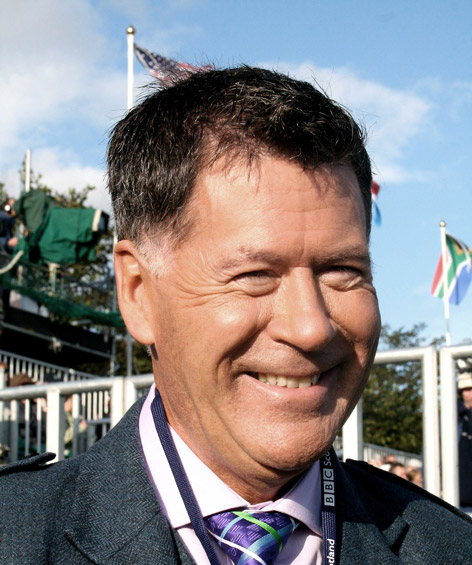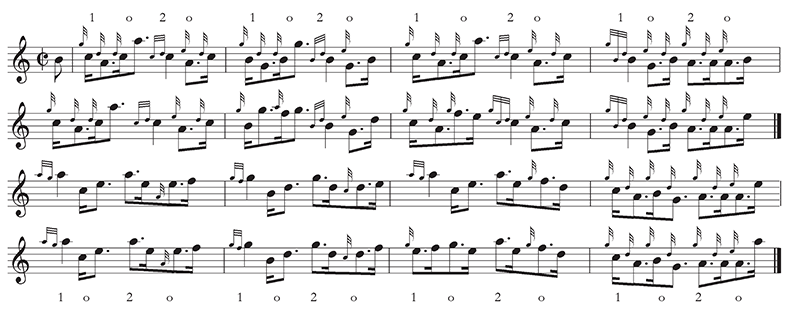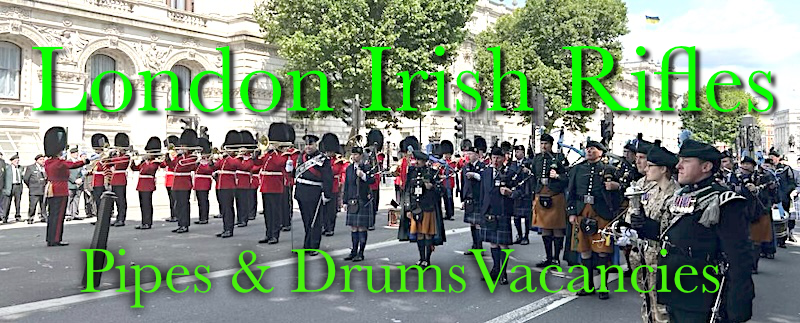 Piping Press is a free resource for all pipers and pipe bands. Our aim is to educate, inform and entertain. Our learning pages, under the banner of PP Academy, have lots of advice and knowledge on how to be a better piper or band and cover all aspects of performance and tuning. Click on the highlighted PP Academy link above or the Tuition tab at the top of this page for more.
Piping Press is a free resource for all pipers and pipe bands. Our aim is to educate, inform and entertain. Our learning pages, under the banner of PP Academy, have lots of advice and knowledge on how to be a better piper or band and cover all aspects of performance and tuning. Click on the highlighted PP Academy link above or the Tuition tab at the top of this page for more.
Today we look at the playing of reels and are delighted to be able to draw on the knowledge and experience of three outstanding individuals in world piping: P/M Ian McLellan, Bob Worrall and Walter Cowan. Ian is a living legend in piping and pipe bands having won multiple World titles with Strathclyde Police PB. He was also renowned as a soloist winning March, Strathspey & Reel titles at Oban and Inverness.
Bob is well known as a judge of both piping and pipe bands and in his playing days was also a champion piper at the highest level. He is a noted composer and has produced three fine collections of music. Walter Cowan is in much demand as a solo adjudicator and has the distinction of winning both the March and Strathspey and Reel competitions at the Argyllshire Gathering on the same day. There is a suggestion that this was just after WW2 but Walter insists it was much more recent than that!
 Ian: ‘When I was first taught how to play reels by P/M Alex MacIver in the 214 Boys Brigade his main idea was always to think of making a rhythmic figure of eight. If you followed that pattern you wouldn’t go far wrong:
Ian: ‘When I was first taught how to play reels by P/M Alex MacIver in the 214 Boys Brigade his main idea was always to think of making a rhythmic figure of eight. If you followed that pattern you wouldn’t go far wrong:
‘I am always a little bit suspicious of rounder reels because I don’t think you ever get the best out of them playing them that way. They can become a little bit ‘hurdy-gurdy’ as far as I am concerned. In Strathclyde Police we were quite pointed with our reels. If you are playing in a band and you are trying to get everyone playing exactly the same you must pick notes that you can anchor on. If you don’t do that you’ll find that unison can get a shaky at times.’
Solo competitions? Six parts or four? ‘I always remember a story from years ago at Inverness. I was tuning up for the Former Winners MSR and Donald MacPherson was in the same room as me. I was playing something like John MacKechnie and he says ‘why are you playing a big tune like that?’ I said, ‘Well it goes down well with the judges.’
[wds id=”2″]
‘Said Donald, ‘I never ever play more than four parts in any tune because remember you are playing twice through and if you keep adding parts you can, instead of playing three tunes, end up playing the equivalent of four.’ After that I said to myself ‘well Donald does pretty well so I think I’ll go down the same road.’
 Bob Worrall: ‘With reels there is quite a wide interpretive range. You can have a more dot/cut style and also a slightly rounded style – but even the rounded reels still have a subtle bit of pointing to them. I am talking about the Highland reels, tunes such as Broadford Bay and Cockerel in the Creel. They still have that same subtle, two-bar phrase, ‘question and answer’ concept within them.
Bob Worrall: ‘With reels there is quite a wide interpretive range. You can have a more dot/cut style and also a slightly rounded style – but even the rounded reels still have a subtle bit of pointing to them. I am talking about the Highland reels, tunes such as Broadford Bay and Cockerel in the Creel. They still have that same subtle, two-bar phrase, ‘question and answer’ concept within them.
‘For example in bar 1 you would just give a little nudge on both of the ‘on’ beat accents and then more of an equal ‘on – off’ accent in bar 2 and then give back to the second ‘on’ beat accent to anchor the end of the phrase. I find that a lot of players lose control and poise when they don’t anchor at the end of the two-bar phrase.

‘Off’ beats in reels are so, so important, as is short note treatment. The player who waits a little too long on the ‘on’ beat accent ends up clipping the note to the ‘off’ beat and you get this clippy style. In other words the short notes stop ‘breathing’. There’s a kind of a roll that you want to achieve with a reel, whether it is dot/cut or a little rounder in style.
‘It would be fair to say that I am looking for something slightly different in the solos than I am from the bands. Bands have had to, for the sake of unison, go towards the dot/cut reel in terms of choice and also in terms of interpretation. John Morrison, Assynt House played by a pipe band is going to be even more dot/cut than you would expect to hear it on the solo boards.’
 Walter: ‘As far as reel playing is concerned Iain Morrison [pictured top playing at Oban] was one of the finest exponents I ever heard – perhaps due to the fact that he was taught by Donald MacLeod. When I compare Iain’s playing with what we hear today I think it is becoming too march like maybe because a lot of the solo pipers are playing in pipe bands. There is a difference. I think Bob’s mentioned that. Over controlled playing is what we hear as a result. Instead, the piper should be letting loose a little.’
Walter: ‘As far as reel playing is concerned Iain Morrison [pictured top playing at Oban] was one of the finest exponents I ever heard – perhaps due to the fact that he was taught by Donald MacLeod. When I compare Iain’s playing with what we hear today I think it is becoming too march like maybe because a lot of the solo pipers are playing in pipe bands. There is a difference. I think Bob’s mentioned that. Over controlled playing is what we hear as a result. Instead, the piper should be letting loose a little.’
Did he think some of the tunes we were hearing in professional competition were a bit light? ‘They are light but you can get more music out of them because they are not as difficult to finger, not as heavy. Bands feel they have to play the six-parters in Grade 1 if they are to make an impression, but they sometimes end up playing them like a march when reels were made to dance to.
‘Having said that about the heavy reels, I used to play the Sheepwife a lot and hearing the Little Cascade played properly, especially in the fourth part, is a real pleasure though some pipers get the emphasis all wrong and it can be difficult to listen to!
‘We have so many good young players coming through now, but they are playing in bands so they must remember to divorce themselves from that style of playing when they go on to the boards.’
[wds id=”3″]

















Recent Comments